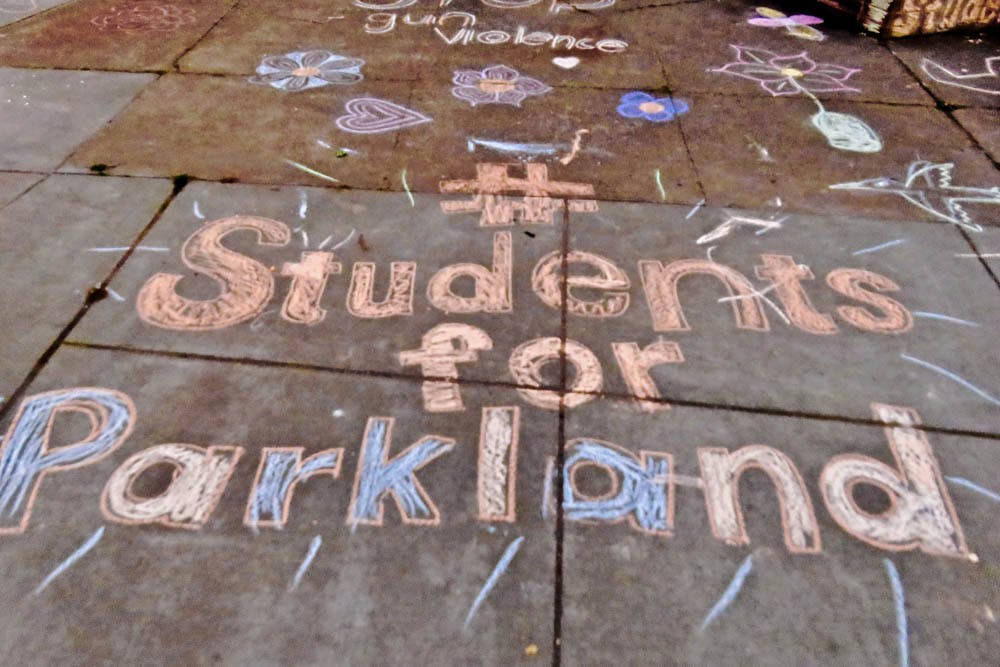In light of the school shooting in Florida earlier this month, colleges and universities in Rhode Island have discussed preparation and prevention tactics in case of a similar emergency.
In the event of an active shooter situation, both Brown and Johnson and Wales University employ the “Run, Hide, Fight” method — developed by the city of Houston with Homeland Security funding in 2012, according to Christopher Harwood, JWU director of emergency management and former biosafety officer at Brown. Houston’s short training video — which entails running from the scene if possible, hiding silently and taking action to disrupt the shooter as a last resort — is featured on the JWU website.
Harwood said he likes the method because it is easy to remember. Unlike other shooter response programs such as ALICE (Alert, Lockdown, Inform, Counter, Evacuate) and CRASE (Civilian Response to Active Shooter Events), “Run, Hide, Fight” is made up of “three monosyllabic words that you learn at five years old,” Harwood added.
Both JWU and Brown have alarm and notifications systems that alert community members in the case of an active shooter situation. JWU uses Blackboard Connect software to send out texts, tweets and voicemails to students, faculty and staff. Brown utilizes the Guardian app, which gives community updates and acts as a “virtual panic button,” allowing users to contact the Department of Public Safety if they are unable to make a phone call, said Deputy Chief of University Police Paul Shanley. Additionally, Brown tests its alert system — which reaches 16,000 community members — every semester.
Schools must identify best practices for each individual location, be it urban or suburban, Harwood said. JWU Harborside campus in Providence is gated off and has a “closed campus feel,” while the school’s Downcity campus, like Brown, has buildings mixed in with local residences and businesses, he added. A more suburban setting allows for an alarm system to reach the majority of campus, but an urban campus is harder to inform during an emergency. Brown employs three alarms to cover campus while JWU uses one, Harwood said.
“Brown also has city streets running through parts of its campus, which presents a unique challenge,” Shanley said.
Both schools have public safety headquarters located near Providence Police district substations, so the police force is involved in improving safety on both campuses, Shanley and Harwood said.
DPS officers participate in active shooter trainings every year, Shanley said. Less frequently, DPS conducts in-depth trainings that act out active shooter situations and include city and state police.
The last time JWU had a full, simulated active shooter drill was May 2014, which took place in the school’s gym and mimicked a shooter situation occuring during a sports game, Harwood said. These large scale drills are often difficult to coordinate between state police, city police and the volume of universities in the area, he added.
Besides trainings and drills, the threat of active shooting has created new law enforcement tactics. As opposed to waiting for a full SWAT team to arrive on site, the first officers present are supposed to enter the building to “neutralize” an active shooter threat, Harwood said. Most active shooter situations last seven to 10 minutes, he added.
Providence Police does not discuss active shooter procedures, wrote Providence Police Public Information Officer Lindsay Lague in an email to The Herald.
Roger Williams Department of Public Safety told The Herald they could not speak on their active shooter procedures without special permission.
Both Shanley and Harwood said the best thing for students to do in case of an active shooter is to be aware.
“There’s so many variables,” Harwood said. “I can’t tell you what (to) do, but if you have options, run, hide, fight.”
While campuses and police address worst-case scenarios, state lawmakers hope to prevent active shooter situations from happening in the first place.
Brown Progressive Action Committee is working with Rhode Island Coalition Against Gun Violence to pass assault rifle bans in Rhode Island. According to the Providence Journal, an assault weapons ban has not been proposed since 2015.
BPAC hopes to mobilize students for the March 14 rally at the State House, wrote Virginia Schilder ’20, a chair for BPAC, in an email to The Herald.





